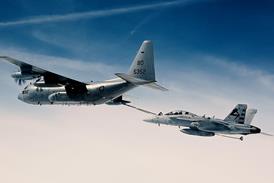United Airlines and Lufthansa have moved alliance building into a new era with the launch in mid-May of the five carrier Star Alliance, which attempts to present the passenger with a more uniform product while retaining individual brands.
At presstime, details were scarce but the carriers were keen to stress that the 'first multilateral airline alliance' will produce 'real benefits' for passengers, such as fully integrated frequent flyer programmes and seamless booking and travel capabilities across all five airlines - Air Canada, Lufthansa, SAS, Thai Airways and United, most of which already cooperate with each other to some extent (see Alliance survey, p26).
The real focus is on keeping the most frequent frequent flyers, or road warriors, within the alliance grouping. 'We have found that the road warriors want recognition across the alliance,' says one source.
Star will enable frequent flyers to accrue miles in a Star members' programme, irrespective of which carrier they fly with, and all points will count towards attaining an 'elite' level, which may be named after United's Premier level. A total of 179 airport lounges from across the world will be thrown open to all qualifying members.
Premier cards issued since late last year already carry the Star logo - five elements which combine to form a star - and this will be used for common branding from aircraft to ticket wallets.
One source indicates that future cooperation will include joint purchasing and the merging of ticket offices - London is the first location where all five carriers will move into one building. The carriers are also 'working on common standards but not necessarily common products,' the source adds. So the Star carriers could introduce a common seat pitch without standardising seat type.
Varig will join the group as the sixth member in October and a second Asian partner is expected to join by year-end. It is questionable how long South African Airlines and British Midland can remain outside Star, but SAA still has American Airlines as its US partner and the UK carrier remains adamant that it wants to pursue its multi-codeshare strategy.
The Star carriers are trying to down play the size of the grouping that the alliance creates. The five carriers account for annual revenues of US$42 billion, operate 1,300 aircraft and employ 210,000 staff. United, Lufthansa and SAS enjoy triangular US antitrust immunity, and the United-Air Canada application is pending, but other competition authorities could see this as a worrying development.
Lufthansa says it now operates 5,638 weekly codeshare flights with its four Star Alliance partners. It codeshares with United on 3,100 weekly flights to 106 destinations; with SAS on 2,024 flights to 71 cities; with Thai Airways on 430 flights to 28 points; and with Air Canada on 84 flights to five cities.
Bob Kahn, vice president of design consultants Diefenbach Elkins, believes the Star Alliance gives its members a significant lead over the other emerging airline groupings. 'They are more serious and have had more meaningful interaction . . . the others are strategic marketing arrangements, not particularly dynamic.'
But one UK consultant is more sceptical and believes different company cultures will make the five-carrier alliance difficult to implement in practice. 'These are fine words, but I want to see [Star] working in practice.'
Source: Airline Business























